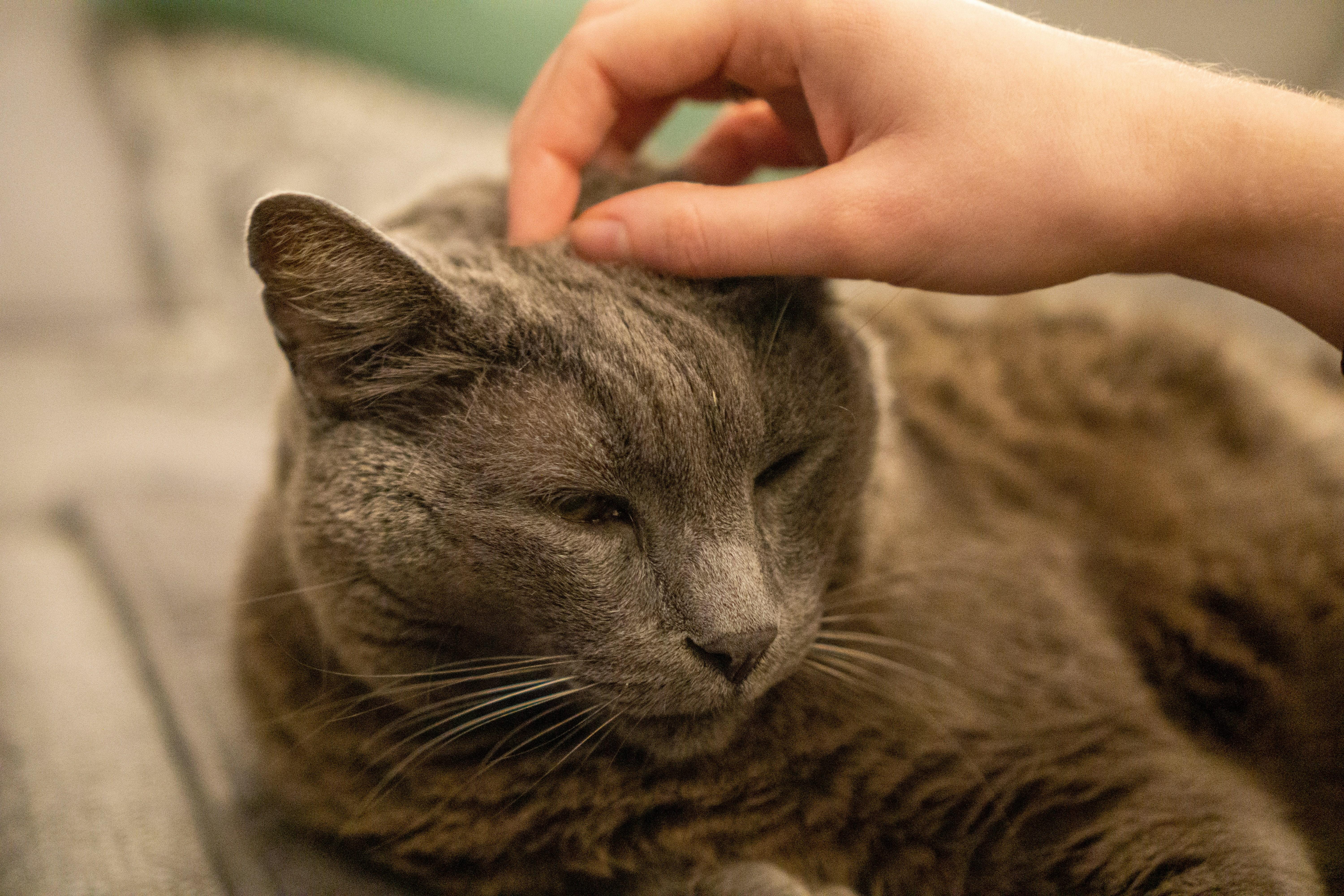Best Insurance for Older Cats: 2025 Expert Comparison
Explore coverage options, costs, and things to watch out for when purchasing senior cat insurance for your feline friend
Published:
When you purchase through links on our site, we may earn an affiliate commission. Here's how it works.

Although cats are often said to have nine lives, they only have one, and pet insurance is key to protecting them. But shopping for insurance for older cats and finding the right coverage can be challenging, especially with limited options, rising costs, and hidden exclusions that are easy to overlook.
When it comes to safeguarding your senior cat’s health, knowing how to identify the best pet insurance policy is essential. In this article, we’ll walk you through the process of choosing the best senior cat insurance, highlighting key factors to consider, common pitfalls to avoid, and tips for getting the best value.
Key takeaways
- While it’s best to insure your cat as young as possible, you can still purchase senior cat insurance for cats aged seven or above—though options may be limited and a bit more expensive.
- Senior cat insurance policies include accident-only, time-limited, maximum benefit, and lifetime.
- When shopping for insurance for older cats, be aware of pre-existing condition exclusions, coverage limits, and higher premium costs.
How do pet insurance companies define a senior cat?
Typically, providers consider a cat a senior around 8 years old, although it varies. Some categorise cats as geriatric from age seven, while others believe cats enter their senior years at 10 or 11.
Why insurance is important for older cats
Insurance is important for cats of all ages, as it helps owners manage the costs of unexpected vet bills and protect their pet’s health. Senior cat insurance is even more critical as cats are more likely to experience health issues as they age.
How pet insurance works for senior cats
Insurance for older cats works the same as for younger cats—you pay a monthly premium in exchange for health coverage for your pet. However, you may notice higher premiums and limited options when browsing senior cat insurance providers. Some providers have an “upper age limit,” meaning they may not cover a cat when they reach a certain age. It’s best to insure your cat before they reach their golden years to ensure health coverage for life.
If you haven’t yet purchased cat medical insurance, don’t despair. Some insurers—such as Petsure—offer specialised plans for older cats, covering accidents and illnesses as you’d expect from a regular pet insurance policy. As with most policies, pre-existing conditions may be excluded, so check the policy guidelines to ensure they meet your needs.
Common health issues in older cats
While all cats are different, common health issues senior cats can suffer from include:
- Arthritis
- Diabetes
- Kidney disease
- Dental diseases (such as gum disease or tooth decay)
- Hyperthyroidism
- Heart disease
- Cancer
Types of pet insurance for older cats
There are four main types of pet insurance as follows:
Accident only
As the name suggests, this policy only covers vet bills related to accidents—your cat won’t be insured for bills arising from illness or pre-existing conditions.
While this plan is usually the most affordable, it’s not the best option for an older cat, given they’re prone to developing health conditions as they age.
Time-limited
This policy is ideal for short-term illnesses or accidents. Each health condition is covered for a specific period—usually 12 months—starting from the first day of treatment.
When purchasing the policy, you decide on the annual limit, but once you reach it—or the policy’s time limit has passed—conditions will no longer be covered, even if you renew. While it’s a great temporary solution for younger cats, time-limited policies don’t protect older cats from ongoing health conditions.
Maximum benefit
While similar to time-limited, maximum benefit policies don’t impose a time limit. You can claim for the same condition multiple times as long as this falls within your annual vet payment limit.
If you reach the limit for 1 condition, let’s say arthritis, you can still claim for others, such as kidney disease. However, once the limit is reached—the agreed-upon maximum payment to veterinarians or animal hospitals—no further treatment is covered.
Lifetime
When purchasing insurance for older cats, Lifetime coverage provides the most comprehensive level of protection and includes ongoing coverage for long-term or chronic conditions. You can choose the necessary level of coverage, which resets each year you renew.
While other policies are cheaper, a lifetime policy covers your cat for life. It’s usually more extensive, including conditions like dental injuries or extras like complementary pet therapies.
What to look for in a senior cat insurance policy
When purchasing senior cat medical insurance, look out for the following:
Age limits and eligibility requirements
Some policies have upper age limits, and a new policy will be refused for a cat past its 7th or 8th birthday. Shop around to find providers specialising in older pets, and ensure your cat meets all eligibility requirements.
Pre-existing conditions and exclusions
Read all of the exclusions in a policy before purchasing. New policies often don’t cover pre-existing health conditions, so it’s best to choose a specialist provider or speak directly with a company to ensure your cat is fully covered.
Be aware that certain breeds of cats—such as the Sphynx or Maine Coon—can be subject to exclusions or restrictions due to their predisposition to specific health issues. Find out if your cat is prone to breed-specific conditions, and make sure your policy covers them.
Coverage limits and monthly premiums
Select an annual vet bill limit suitable for your cat’s needs—and your budget. Compare your options to see how different annual limits affect your monthly premium.
Reimbursement rates and excess fees
Make sure your excess fee—the amount you’ll pay towards your cat’s treatment before insurance reimbursement—is manageable.
You should also check if your policy includes reimbursement rates. For example, if your policy has a 90% reimbursement rate, your insurer will cover 90% of eligible expenses, and you’ll be responsible for the remaining 10%.
Cost of pet insurance for older cats in the UK
The cost of pet insurance can vary significantly between providers, and it depends on factors such as your cat’s age, health, breed, and the level of coverage required. For example, older cats are more expensive to insure than kittens, and pedigree cats will often have higher insurance costs due to their risk of inherited diseases.
On average, you can expect to pay between £5 and £40 a month for a basic policy, while a more comprehensive lifetime policy could set you back £50–70 per month for an older cat. It’s best to head to your preferred provider and start a quote for an accurate prediction.
How to get cheaper cover for a senior cat
Insure your cat as early as possible
Purchasing a lifetime policy before your cat’s 7th birthday can be more cost-effective in the long run and helps you avoid the challenge of finding a new policy for an older cat. Just remember to renew annually.
Shop around
Research and compare policies that specifically offer insurance for older cats, as they may offer more bespoke and affordable plans than a general insurer.
Use a comparison site
If you’re unsure where to start, use sites such as CompareTheMarket or MoneySupermarket to compare each provider’s costs, inclusions, and exclusions.
Consider different policies
If you have numerous pets, a multi-pet policy can cover them all under 1 plan, often with a discount for each additional pet. All your pets will have coverage, and you’ll save on the cost of senior cat insurance.
Speak to insurers directly
If you can’t find a suitable policy, reach out to providers personally. They may be able to offer a discounted plan.
Know when to claim
Once covered, consider when to claim on your insurance. Making numerous low-cost claims can result in higher premiums, so always weigh up the cost of the excess against potential monthly increases.
Remember, cheaper pet insurance doesn’t always mean better coverage. Read the fine print and ask questions to ensure your pet is fully covered.
FAQs
Is it worth insuring an older cat?
While pet insurance isn’t compulsory, senior cat insurance is definitely worth it. Insurance can help you manage the cost of unexpected vet bills due to accidents or illness—the latter is more likely as your pet ages.
Is my cat too old for pet insurance?
It depends on your cat’s age and the insurer’s policies. Many insurance companies have age limits for new policies—usually around 8-10 years—but some providers still offer insurance for older cats, albeit with higher premiums.
Is there an age limit for cat insurance?
Buying an insurance policy while your pet is still young and healthy is best. However, most providers insure cats until their 10th birthdays. Look for a provider with no upper age limits, as some providers won’t approve new policies for senior pets.
